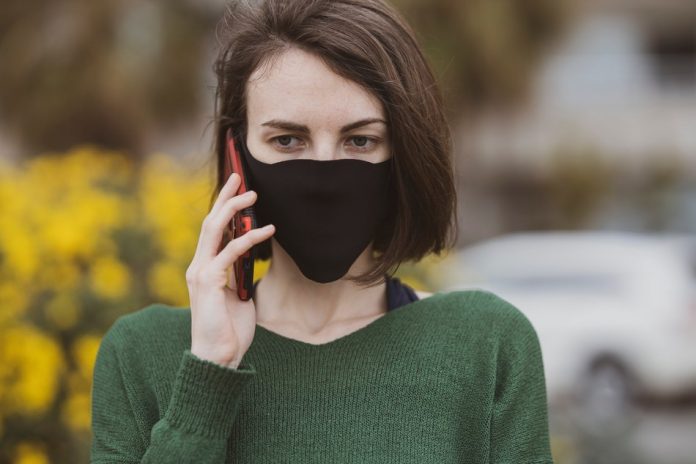The Simcoe Muskoka District Health Unit had issued the following letter:
March 11, 2021
To persons responsible for a business or organization in the municipalities in the County of Simcoe, the District of Muskoka, and the Cities of Orillia and Barrie:
Re: Simcoe Muskoka District Health Unit Instructions to persons responsible for a business or organization, in the County of Simcoe, the District of Muskoka, and the Cities of Orillia and Barrie, that are permitted to open under the Reopening Ontario (A Flexible Response to COVID-19) Act, 2020, S.O. 2020, c.17, as amended, and associated Regulations, as amended as well as any other emergency order and/or public health statute including the Emergency Management and Civil Protection Act, R.S.O. 1990, c. E.9 that is in force. If your business or organization is subject to a Section 22 Order under the Health Protection and Promotion Act, R.S.O. 1990, c. H.7 you must adhere to both the requirements of the Order and to this letter of instruction.
This letter of instruction replaces all prior letters of instruction issued by the Simcoe Muskoka District Health Unit to businesses and organizations within Simcoe and Muskoka and may be amended or rescinded without notice.
The following businesses or organizations are currently exempt from the instructions issued below due to sector specific legislation, directives and/or guidelines currently governing these workplaces COVID-19 measures:
- A licensed childcare program that is in compliance with guidance issued by the Ministry of Education;
- Health care providers and health care entities as defined in Section 77.7 of the Health Protection and Promotion Act, 1990, who are subject to the Chief Medical Officer of Health’s Directives issued thereunder;
- Personal care service providers as described in and regulated by the Reopening Ontario Act and/or its Regulations, as amended;
- Schools and school boards licensed under the Education Act, 1990; and
- Schools and Private schools within the meaning of the Education Act, that are operated in accordance with a return to school direction issued by the Ministry of Education and approved by the Office of the Chief Medical Officer of Health.
Instructions for Additional Public Health Measures in the County of Simcoe, the District of Muskoka and Cities of Orillia and Barrie.
As the transmission of COVID-19 remains elevated and now given the circulation of COVID-19 variants within Simcoe Muskoka District Health Unit (SMDHU) we are facing a critical time in our combined efforts against this disease. Variants of COVID-19 are more contagious which means it will take more intensive efforts of the same public health practices to prevent transmitting infection to one another. This second wave of transmission continues to impact our lives, our businesses, our work, and the ability of our healthcare system to manage the increased demands on its services.
Key factors contributing to transmission is close contact between individuals in both work and social settings, which then spreads the disease easily to individuals within households. SMDHU continues to see workplace and public setting transmission, often resulting in outbreaks. This is due, in part, to a failure of some workplaces and businesses to meet the requirements of the provincial health and safety legislation and the public health preventive measures for the workplace.
As a result, I am reissuing the following instructions to the businesses and organizations within the municipalities serviced by SMDHU requiring them to take additional measures to reduce the spread of COVID-19 as provided below. These instructions are to be implemented by every business and organization within SMDHU, unless specifically exempt
by these instructions, in addition to any COVID-19 regulatory requirements, local bylaw or health unit Order that are in force or effect.
Instructions to persons responsible for businesses and organizations:
Effective March 11, 2021 at 12:01 a.m., I am instructing all persons responsible for a business or organization in the County of Simcoe, District of Muskoka, City of Barrie, and the City of Orillia to implement the following measures:
- Appoint a Compliance Officer responsible for the implementation of a COVID-19 safety plan (as described in the Reopening Ontario Act and/or its Regulations, as amended) and the compliance with that safety plan, as well as the implementation and compliance with all required and recommended occupational health and safety and infection prevention and control measures.
- Enable remote work for workers, where reasonably possible, to reduce the number of workers exposed to the workplace.
- Ensure workplace active screening1 is conducted daily for all workers attending the workplace. Screening should occur before or when a worker enters the workplace at the beginning of their day or shift. Workers with COVID-19 symptoms, or who have been identified as a close contact of a person diagnosed with COVID-19, are to be immediately excluded from work and encouraged to self-isolate and seek assessment and testing.
- Ensure that physical distancing of workers takes place by at least 2 metres throughout the workplace, where reasonably possible, and during eating and rest periods (i.e. lunchrooms, change rooms). One-way walkways and workflows shall be provided where applicable to reduce the potential for and occurrence of close physical interaction between individuals, including between workers.
- Physical barriers2 (such as plexiglas) should be used where reasonably possible, in particular in environments where physical distancing cannot take place. Physical distancing is preferable to the use of barriers where reasonably possible.
1 Screening questions can be asked in-person or can be answered remotely and reviewed by the workplace before workers arrive onsite.
If screening is to occur in-person:
- Limit points of entry into the setting to help facilitate screening.
- Space and layout the entrance so that physical distancing can be maintained during screenings.
- Encourage all staff to use Alcohol-based hand rub (ABHR)/hand sanitizer with 60-90% alcohol content before entering.
- If physical distancing cannot be maintained during screening the following is required:
- Placing a physical barrier (ie. plexiglas) that staff can be behind in order to conduct screening at entrances to protect from droplets; OR
- The need for medical (surgical/procedure) masks and eye protection, ABHR, tissue, and lined no-touch waste basket or bin to screen staff in situations where a physical barrier is not available and close contact with an individual is likely to occur.
2 Physical barriers should include:
- Adequate dimensions that protect the breathing zone of the tallest person using the partition. The breathing zone can be thought of as a bubble with a radius of 30 cm extending out from the mouth and nose;
- Pass-throughs or openings that are as small as possible and not located in the breathing zone of either user (these do not include speaking ports or grates);
- Secure installations, such that they cannot tip or fall, and do not block or impede emergency egress;
- Surface-mounted partitions with small openings and wings/surrounds being preferred over hanging partitions that can swing or waft air; and
- A plan for regular cleaning at least daily with mild soap and water and a compatible disinfectant.
Adapted from: The National Collaborating Centre for Environmental Health Physical Barriers for COVID-19 Infection Prevention and Control in Commercial Settings: May 2020
- For the indoor area of the premises, which is accessible to members of the public, ensure each worker wears a mask or face covering that forms a barrier with the skin in a manner that covers their mouth, nose and chin, and as best as possible, maintains a physical distance of at least two metres from every other person while in the indoor area. A face shield alone is not considered adequate covering of the face. Reasonable exceptions are permitted for those who cannot tolerate masks or face coverings. In addition, all workers are required to wear eye protection if in the course of their duties they are required to come within 2 metres of another person who is not wearing a mask or face covering in a manner that covers that person’s mouth, nose and chin during any period when that person is in an indoor area. Even if the other person is wearing a mask or face covering, workers should wear eye protection if they are required to come within 2 metres of the individual and the interaction is expected to last 15 minutes or longer.
- For the indoor area of the premises, which is not accessible to members of the public, ensure each worker wears a mask or face covering that forms a barrier with the skin in a manner that covers their mouth, nose and chin, and eye protection unless they are able to maintain a physical distance of at least two metres from every other worker. If eye protection is not worn and two metres distance is not maintained for 15 minutes or longer, then workers may be considered close contacts requiring 14 days of self-isolation, upon public health investigation of a co-worker diagnosed with COVID-19. A face shield alone is not considered adequate covering of the face.
- If a worker is providing direct care to a suspect or confirmed case of COVID-19, regardless of where in the premises this occurs, ensure the worker wears appropriate personal protective equipment (PPE). A point-of-care risk assessment must occur and at a minimum, PPE must include a medical mask and eye protection. A face shield is not a replacement for a medical mask of face covering.
- If a worker, in the course of providing a service indoors, is required to come within two metres of another person who is not wearing a mask or face covering and there is no separation (by physical barrier) between the worker and the other person, ensure the worker wears appropriate personal protective equipment (PPE). At a minimum, this would include a medical mask and eye protection. A face shield is not a replacement for a medical mask or face covering.
- Ensure supplies and facilities are provided for adequate hand hygiene to take place in work and rest/eating areas within the workplace including the supply of 60-90% alcohol-based hand rub for workers and clients.
- Take appropriate infection prevention and control measures including environmental cleaning in all areas accessible to the public, including washrooms, check-out counters, concession stands, and other high-touch surfaces (i.e. doorknobs, accessible/elevator buttons, pay machines, etc.) using disinfectants with a drug identification number (D.I.N.) while ensuring manufacturer instructions for use are followed.
- Minimize instances of more than one individual per vehicle for driving associated with work, and when unavoidable, ensure face coverings (preferably medical masks) are supplied to and used by each individual, ensure distancing to the degree most possible, and ensure the use of increased ventilation to the outdoors (i.e. through a partially open window) in vehicles, where possible. If the travel time is expected to be 15 minutes or longer, eye protection should be provided to individuals.
- Conduct, or have the property owner or landlord conduct a regular review of heating, ventilation, and air conditioning (HVAC) systems in the workplace, except motor vehicles, to ensure they are functioning and in good working order.
- Ensure that upon request from SMDHU, that information requested is provided to SMDHU as it relates to information required for case and contact management as well as outbreak management. This may include but is not limited to, accurate and updated contact information for all workers (and clients if prescribed in the Reopening Ontario Act and/or its Regulations, as amended), site plans and staff schedules. In addition to legislated requirements under the Occupational Health and Safety Act, 1990, ensure any further instructions, directions and guidance provided by SMDHU, the Government of Ontario and/or the Government of Canada pertaining to COVID-19 are followed. This may include ensuring adherence to isolation orders issued to employees, ensuring the required public health measures such as active screening and physical distancing are always maintained within a workplace and supporting all aspects of investigations and outbreak management related to communicable diseases, including COVID-19, conducted by SMDHU.
You are required to comply with the above instructions as provided by the Reopening Ontario (A Flexible Response to COVID-19) Act, 2020 and its Regulations as they are advice, recommendations and/or instructions of a public health official and shall be in full force and effect despite any changes to the SMDHU’s zone status colour or stage of reopening under the Reopening Ontario (A Flexible Response to COVID19) Act, 2020 as may be amended from time to time.
For the purpose of these Instructions:
- “worker” means any employee, independent contractor (including ‘temporary’ agencies, manager, director, officer, owner, partner, shareholder, volunteer, student or any other person engaged in the business or organization activity at the workplace.
- “workplace” means any land, premises, location or thing at, upon, in or near which a worker works.
- Enforcement associated with these instructions may be conducted by police officers as well as provincial offences officers (which includes but is not limited to municipal bylaw enforcement officers and public health enforcement personnel).
- Any reference to mask or face covering in this letter is as per the Province of Ontario’s COVID-19 regulatory framework requirement, under the Reopening Ontario (A Flexible Response to COVID-19) Act, 2020, which require a mask or face covering to be worn “in a manner that covers their mouth, nose and chin.”
These measures are intended to reduce the transmission of COVID-19 where the collective efforts of various sectors, including workplaces are required to protect our communities.
Sincerely,
ORIGINAL Signed By:
Charles Gardner, MD, CCFP, MHSc, FRCPC
Medical Officer of Health
CG:cm








